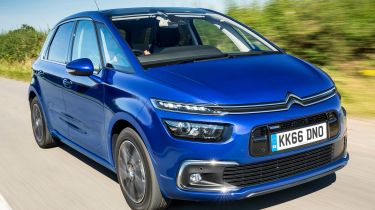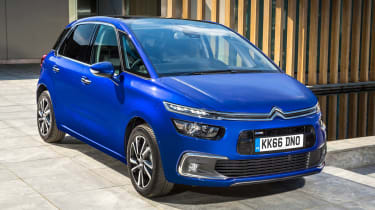Citroen C4 SpaceTourer (2013–2019) review - MPG, CO2 and Running Costs
For a practical people carrier with such large dimensions, the Citroen C4 SpaceTourer is very cheap to run

The most efficient C4 SpaceTourer is the BlueHDi 100. According to Citroen’s official figures, this model returns 74.3mpg fuel economy and emits just 99g/km of CO2 – no mean feat for such a large car.
Our choice would be the BlueHDi 120, though – it feels much faster day-to-day and promises an identical 74.3mpg. The most potent diesel C4 Picasso, the BlueHDi 150, is barely any less efficient, as it’s capable of 70.6mpg and 102g/km.
Buyers who are watching the pennies on running costs shouldn’t discount the petrol models, though. Even the brilliant PureTech 130 will return 56.5mpg and emits just 115g/km of CO2. If you spend most your time in town, this is the car we’d go for.
The most expensive and most powerful C4 SpaceTourer THP 165 emits 130g/km or 134g/km depending on the trim, and claims 50.4mpg or 48.7mpg fuel economy, so it’s the least efficient model by a long way.
Insurance groups
The C4 SpaceTourer range starts in insurance group 14 for the entry-level Feel model with the 130 PureTech engine. This rises to group 15 for the BlueHDi 100 diesel and the PureTech petrol in Flair spec.
The BlueHDi 120 models sit in group 17 or group 18 depending on the trim level, while the BlueHDi 150 versions range from group 17 to group 24. Buyers are looking at group 22 insurance for the THP 165 petrol model. For comparison, the C4 SpaceTourer's main rival, the Ford C-MAX, will usually work out cheaper to insure as it spans groups 11-20.
Depreciation
Citroen models have traditionally struggled to hold on to their price over the years, but our experts predict that the C4 SpaceTourer will buck the trend, largely because it’s such a desirable choice in the MPV class. Residual values stand at 40.8 per cent after three years, which are only slightly behind the Volkswagen Touran.









